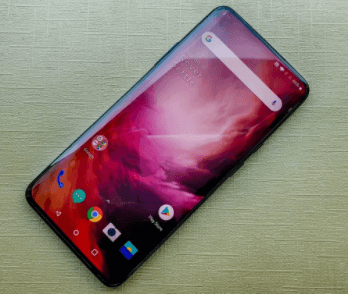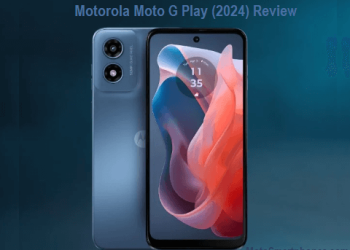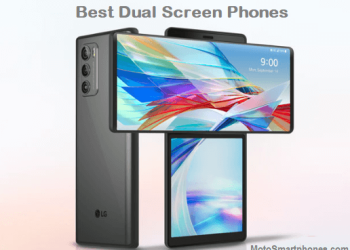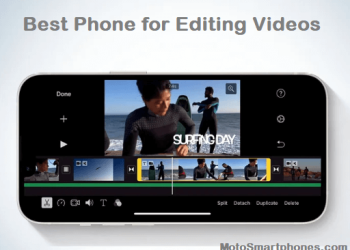It was often argued that the human eye could not perceive picture quality beyond specific pixel densities on mobile screens. However, this concept does not prevent smartphones and buyers from moving 2K (2560 x 1440) to 4K (3840 x 1644) and higher-resolution smartphones.
In 2024, Quad HD+ resolution 2960 x 1440 is also becoming common in smartphones with 18.5:9 or 19:9 aspect ratio displays. Smartphone releases its latest phones with Quad HD+, 2K, 4K, and 8K resolution.
Best Highest Resolution Phone 2024
Mobile phone companies are working hard to achieve more sophisticated, high-resolution displays. Three hundred pixels per inch was a pixel density that was once considered optimal for phone screens.

It has now been replaced by a display that supports almost double the number. Mobile phone manufacturers are bragging about new launches with great shows that support them.
Explanation of resolutions on the phone
HD: 1280 X 720 pixels on a 5-inch screen provides a screen density of approximately 300 PPI.
Full HD: A screen density of 1920 x 1280 pixels on a 5-inch screen is at least 440 PPI.
Quad HD (2K): 2560 x 1440 pixels on a 5-inch display delivers an incredible 538 PPI pixel density.
Quad HD+: 2960*1440 pixels on a 5-inch display offers a very high 658 Ppi pixel density.
List of Highest-Resolution Phones:
- Sony Xperia 1 IV: 4K OLED with 1644 x 3840 pixels and 537 ppi
- Samsung Galaxy S24 Ultra with 1440 x 3088 pixels and 518 ppi
- Apple iPhone 15 Pro Max with 1290 x 2796 pixels and 458 ppi
- OnePlus 11 with 1440 x 3180 pixels and 525 ppi
- Samsung Galaxy Xcover 7 with 1080 x 2408
- Xiaomi 13 Pro with 1440 x 3200 pixels and 538 ppi
- ASUS ROG Phone 7 with 1440 x 3088 pixels and 518 ppi
- Google Pixel 8 Pro with 1440 x 3120 pixels and 512 ppi
- OPPO Find X6 Pro with 1440 x 3264 pixels and 541 ppi
- Vivo X90 Pro+ with 1440 x 3200 pixels and 538 ppi
- ZTE Nubia Z50 Ultra with 1440 x 3120 pixels and 525 ppi
- RedMagic 8 Pro with 1440 x 3120 pixels and 525 ppi
- Black Shark 6 Pro with 1440 x 3120 pixels and 525 ppi
- Nubia RedMagic 8 with 1440 x 3120 pixels and 525 pp
- Huawei Honor Magic 6 Pro with 1280 x 2800
- Asus ROG Phone 8 with 1080 x 2400
- Huawei Honor X50 GT with 1220 x 2652
- Xiaomi Redmi Note 13 5G with 1080 x 2400
- Oukitel WP33 Pro with 1080 x 2408
- Oppo Find X7 with 1264 x 2780
- OnePlus Ace 3 with 1264 x 2780
List of Motorola’s Highest-Resolution Phones:
- Motorola Moto G Play (2024) with 720 x 1600 pixels
- Motorola Moto G Stylus 5G (2024) with 1080 x 2200 pixels
- Motorola Edge 30 Ultra with 3120 x 1440 pixels
- Motorola Moto G24 with 720 x 1612 pixels
- Motorola Moto G 5G with 1080 x 2400 pixels
- Motorola One Hyper with 1080 x 2340 pixels
- Moto Z4 with 2340 x 1080 pixels
- Motorola Edge 30 pro with 1080 x 2400 pixels
- Moto G30 with 1600x720px pixels
- Moto G200 with 1080 x 2460 pixels
- Motorola Edge 20 Lite with 1080 x 2400 pixels
- Moto G Stylus 2022 with 1080 x 2300 pixels
- Moto G Power with 1,600 by 720 pixels
- Motorola Edge with 1080 x 2340 pixels
- Moto G Play 2021 with 720×1280 pixels
- Motorola Razr 2019 with 876 x 2142 pixels
- Motorola One Fusion with 720×1600 pixels
- Motorola Edge S with 1080 x 2520 pixels
- Motorola G6 with 2160×1080 pixels
- Moto G100 with 1080 x 2520 pixels
- Moto G40 Fusion with 1080 x 2460 pixels
- Moto G60 with 1080 x 2460 pixels
- Motorola Droid Turbo with 2560×1440 pixels
- Moto Z2 Force with 2560×1440 pixels
- Motorola Nexus 6 with 2560×1440 pixels
- Moto G4 with 1080×1920 pixels.
Conclusion of Highest Resolution Phone 2024
So far, these are the highest-resolution phones of 2024. All the phones mentioned in the list have the best PPI that lets you enjoy the screen while playing games, watching your favorite shows, or editing pictures/videos.
Amazingly clear and detailed images deliver an incredible visual experience. The list mentioned above of phones uses the latest display technology to provide vibrant colours and create immersive visuals. While PPI isn’t the only factor determining display quality, the phones listed above clearly demonstrate a commitment to pushing the envelope and raising the bar for visual excellence.
Currently, these are the phones with the highest PPI as technology advances. We can expect much higher PPI numbers and more improvements in display innovations to further improve the smartphone viewing experience. If you want full reviews of these phones, please let us know.
Frequently Asked Questions
Is a higher PPI better?
The higher the PPI, the more detailed information you can getabout everything displayed on the screen. This means better images, fonts, smoother lines, and higher quality.
What is PPI suitable for a phone?
The highest resolution of a cell phone on the market today is around 440 PPI per inch. The average is close to 300 PPI.
What is the importance of PPI in smartphones?
A. PPI (pixels per inch) is an important factor in smartphone displays. This is because it affects the level of detail and clarity you can see on the screen.
The higher the PPI, the higher the density of pixels, resulting in sharper and more detailed images. This is especially important for smartphones with large displays or high resolution, as low PPI on large displays can cause blurry or pixelated photos.
PPI affects image quality and other aspects of a smartphone’s performance, such as battery life and processing power.
Phone displays with higher PPI require more processing power to render images, which can drain your battery faster. Therefore, smartphone manufacturers must balance display quality and battery life when choosing the PPI for their devices.
Does a higher PPI drain the battery?
Higher pixels per inch (PPI) can potentially drain the battery life of devices such as smartphones and tablets. This is because displays with a higher PPI require more processing power to render images, which can consume more energy and drain the battery faster.
However, it’s worth noting that other factors, such as display brightness, network connection, and app usage, also affect overall battery usage. In some cases, devices with higher PPI displays may have longer battery life than devices with lower PPI displays if they are optimized for power efficiency in other areas.
Additionally, many smartphone manufacturers are incorporating power-saving features such as adaptive brightness and automatic sleep modes into their devices, which can help reduce battery drain associated with high PPI displays. Ultimately, how PPI affects battery life depends on the device and how well it is optimized for power efficiency.
How much PPI can the human eye see?
The human eye’s ability to perceive screen details depends on many factors, including the distance between the viewer and the screen, screen size, and display resolution.
It is generally believed that the average human eye can distinguish individual pixels at a distance of about 300 PPI (pixels per inch) on a smartphone or tablet screen at a typical viewing distance of about 12 inches.
However, while some people with excellent vision may be able to recognize individual pixels at higher PPIs, others may not notice much of a difference in image quality beyond a certain point.
It’s worth noting that PPI is just one of the factors that affect the image quality of a screen, and other factors such as color accuracy, contrast, and brightness also play a role in ensuring that images appear sharp and detailed.
Is 500 PPI suitable?
Images with higher PPI tend to have higher quality because of pixel density, but exporting at 300 PPI is generally considered the industry standard.
How much is PPI 4k?
The same screen at 4k resolution (Ultra HD or 3840×2160) has a density of 183.58 PPI.
Is QHD 4K?
QHD is 4K in that it has four times as many pixels as the 720p HDTV video standard.
Is 2560×1440 good for gaming?
The 2560×1440 offers more vivid detailand more screen space (depending on screen size and the number of pixels per inch ratio) but also consumes more power when it comes to gaming.







Discussion about this post